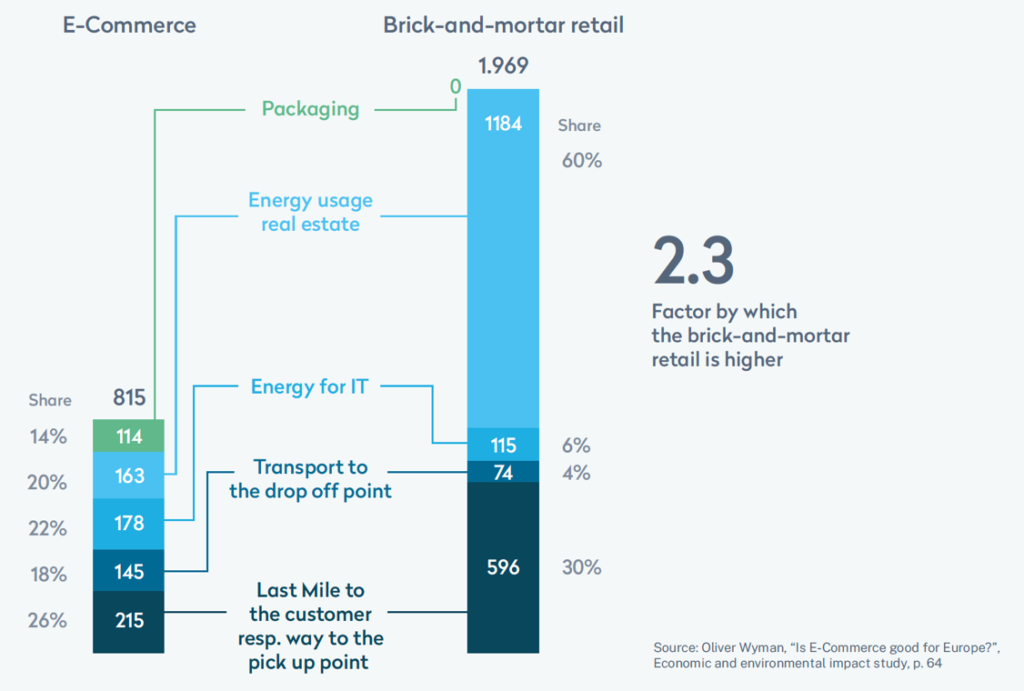Delivery shame? Delivery pride! Anyone concerned about the environment will order online from now on. This is two to three times less harmful to the environment than going to the store yourself.
Reports on the environmental impact of e-commerce are based on solid research. Researchers agree that there is no reason for concern from a sustainability standpoint (GHGs). For example, a recent Oliver Wyman study (with the University of St Gallen) focuses on eight countries: France, Germany, Italy, the Netherlands, Poland, Spain, Sweden, and the United Kingdom. It is based on an analysis of official statistics, independent retailers’ surveys conducted in 2020, and a proprietary CO2 impact model. The study found that retail is transformed across the eight focus countries at different speeds. The main changes are an evolution toward more organized retail, the growth of e-commerce, and a shift in household spending from goods to services.
Is e-commerce good for Europe?
Retail is gaining jobs in net terms, and e-commerce is contributing. There were fewer retail outlets in 2019 than in 2005, but the total store surface area remained stable as stores grew larger. Cities that are wealthy or growing tend to increase their number of retail jobs and outlets. In addition, the e-commerce share of retail sales is higher in countries where retail is more organized, as established organized retailers have moved faster toward omnichannel retailing.
The environmental impact
The environmental impact of e-commerce appears to be positive. Offline shopping results in between 1.5 and 2.9 times more greenhouse gas emissions than online shopping. While e-commerce needs delivery vans to circulate, these reduce car traffic by between four and nine times the amount they generate. Land use for e-commerce is lower than for physical retail when logistics, selling space, and parking space are included. Staff traveling to and from stores is omitted.

Source: Oliver Wyman
